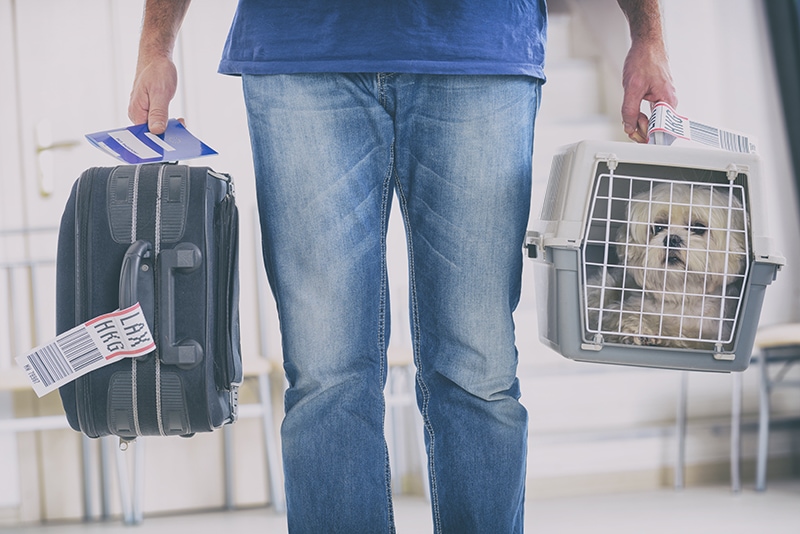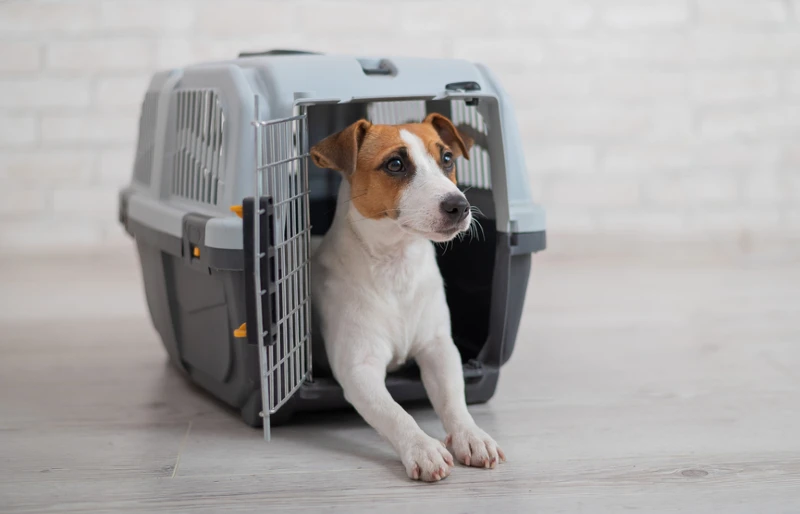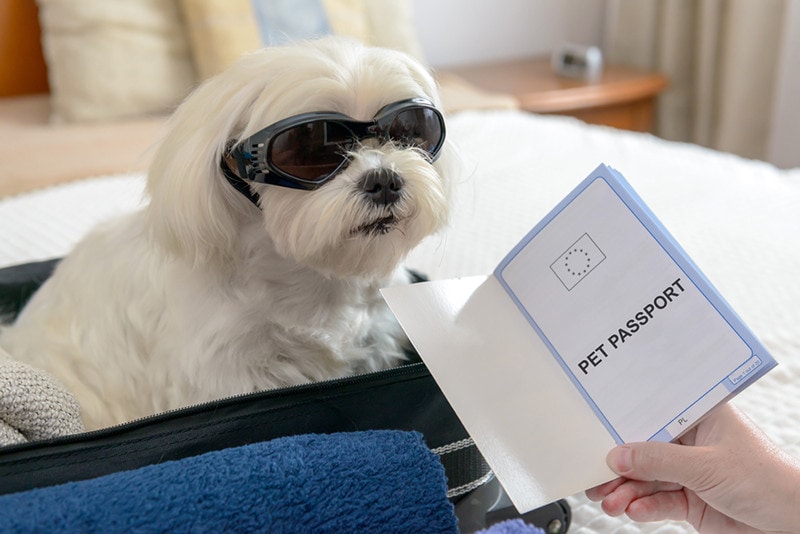Traveling With a Dog to Europe: 10 Vet-Approved Tips
By Jessica Kim
Updated on

Traveling to Europe with your dog is a great way to create fun memories and make your travel experience unique. However, there’s no denying that it takes extra time and planning to ensure your dog is ready to travel. You’ll have to make sure that you obtain all the necessary travel documents and work with airline companies and hotels that can accommodate dogs.
It can feel overwhelming as you’re trying to figure out how to travel with your dog to Europe. So, we’ll go over the basics of what you need to do to ensure that you and your dog can travel together.
The 10 Tips for Traveling With a Dog to Europe
1. Research the Destination Country’s Travel Policy

Before you start booking flights, make sure to familiarize yourself with your destination country’s pet travel laws. If you’re going to a country that is a member of the European Union, you can start your research by viewing the European Union’s travel requirements for pets. Just keep in mind that while most countries in the European Union have similar travel policies, some can have slightly differing requirements for the types of vaccinations your dog will need.
2. Get Your Dog Microchipped
In order to enter a European Union country, your dog must be microchipped. It’s most convenient to use an ISO-compliant microchip, as customs officials will have scanners for these types of microchips. If your dog hasn’t been microchipped with an ISO-compliant microchip, you can either bring your own scanner for your dog’s current microchip or have your veterinarian implant a second one.
Microchipping is still important even if a country doesn’t require it. Traveling can be stressful for dogs, and they’re often more prone to wandering off and getting lost. So, getting your dog microchipped and updating the information associated with the microchip is a standard practice for pet travel.
3. Schedule a Veterinarian Appointment

One of the most significant documents you’ll have to obtain is a pet health certificate. You can start to apply for this certificate by visiting a federally-accredited veterinarian, which is a veterinarian that’s authorized to endorse pet health certificates. A federally-accredited veterinarian can conduct a physical exam and make sure that your dog gets all the vaccines, tests or treatments that are required by the country you’re entering.
Keep in mind that some European countries have varying waiting periods for dogs that can enter their country after they’ve gotten a specific vaccine. So, it’s extremely important to schedule a veterinarian appointment as soon as possible in case your destination country requires a waiting period.
4. Receive a USDA Endorsement
Many countries require a health certificate that’s endorsed by the USDA. You can obtain a USDA endorsement by having an accredited veterinarian complete, sign, and date a health certificate. The veterinarian will submit the health certificate to the USDA or provide sufficient paperwork so that you can submit it yourself. The processing period can vary, and it can take several weeks for the paperwork to be processed and endorsed.
5. Book Flights With the Right Airlines

Make sure to read through each airline company’s pet travel policy because they can differ from one another. For example, some companies don’t allow dogs to travel in cargo, and others won’t allow pets on flights that last over a certain number of hours. It’s also important to find out if a company has breed restrictions and won’t allow certain dog breeds on their flights.
It’s best to contact an airline company directly to get the most updated information on their pet travel policies. A representative will be able to walk you through all the documents you need to obtain and ensure that your dog is able to travel with them.
6. Find a Pet-Friendly Hotel
It can take some time to find a pet-friendly hotel abroad, so try to begin your search as soon as you can. Pet-friendly hotels will have their own rules and regulations with dogs on their premises. Most won’t allow unleashed dogs in shared spaces, and some won’t allow dogs to remain unattended in their rooms. As with airline companies, it’s best to contact pet-friendly hotels directly to get their most updated pet policies, as they can change at any time.
7. Purchase an Airline-Approved Travel Crate

Once you’re ready to book a flight with an airline, check to make sure that you have a dog crate that’s compliant with the airline’s requirements. Dogs traveling in-cabin must remain in their crates throughout the duration of the flight, and they must be stowed beneath your seat. So, it’s important to find a crate that’s both comfortable for your dog and in compliance with the airline’s dimension and size requirements.
If you’re looking for a new travel dog crate, it’s best to start your search by asking your airline company if they have any specific recommendations. You must also get your dog acclimated and comfortable inside the crate, so it’s important to start or brush up on crate training at least a few weeks before your flight departure date.
8. Be Prepared at Customs
Make sure that you have all your paperwork in one place so that you can enter and exit customs with ease. You should have your dog’s endorsed health certificate on hand, and it’s also helpful to have their microchip ID written on any travel documents so that the customs officer can view and verify them quickly.
If your dog is traveling in cargo, you’ll receive a tracking number, also known as an air waybill number, after you’ve checked them in. Make sure to keep this number in a safe spot, as you’ll need it to claim your dog in customs.
9. Consider Getting an EU Pet Passport

If you plan to be abroad in Europe for a long time and will travel to different countries, you may want to consider getting an EU Pet Passport. An EU Pet Passport is an official health document that enables dogs to travel through EU countries with just one health document rather than having health documents for each individual country. The purpose of this passport is to make traveling with dogs easier, but it’s not necessary, especially if you only plan to visit one country.
An EU Pet Passport cannot be issued in the US, and you’ll have to schedule an appointment with an accredited veterinarian in an EU country to obtain one.
10. Take It Easy on the First Few Days in Europe
Traveling can be very stressful for dogs, so it’s important to take it easy once you arrive in Europe. Make sure to spend the rest of the day with your dog, check on their condition, and look for any signs of illness. It’ll also be helpful to map any vet clinics near your hotel in case of any emergencies.
It’ll take a few days for your dog to adjust to being in a new country, so try not to engage in any over strenuous and over stimulating activities right away.
Conclusion
When traveling to Europe with dogs, it’s best to have as much time as possible on your side.
Getting a USDA endorsement on health certificates can take several weeks, and some countries have vaccination waiting periods. So, make sure to contact a federally-accredited veterinarian and start the process of getting a health certificate right away. If you have any questions about pet travel, it’s best to contact the USDA or the embassy of your destination country to obtain the most accurate and updated information.
Featured Image Credit: Monika Wisniewska, Shutterstock












